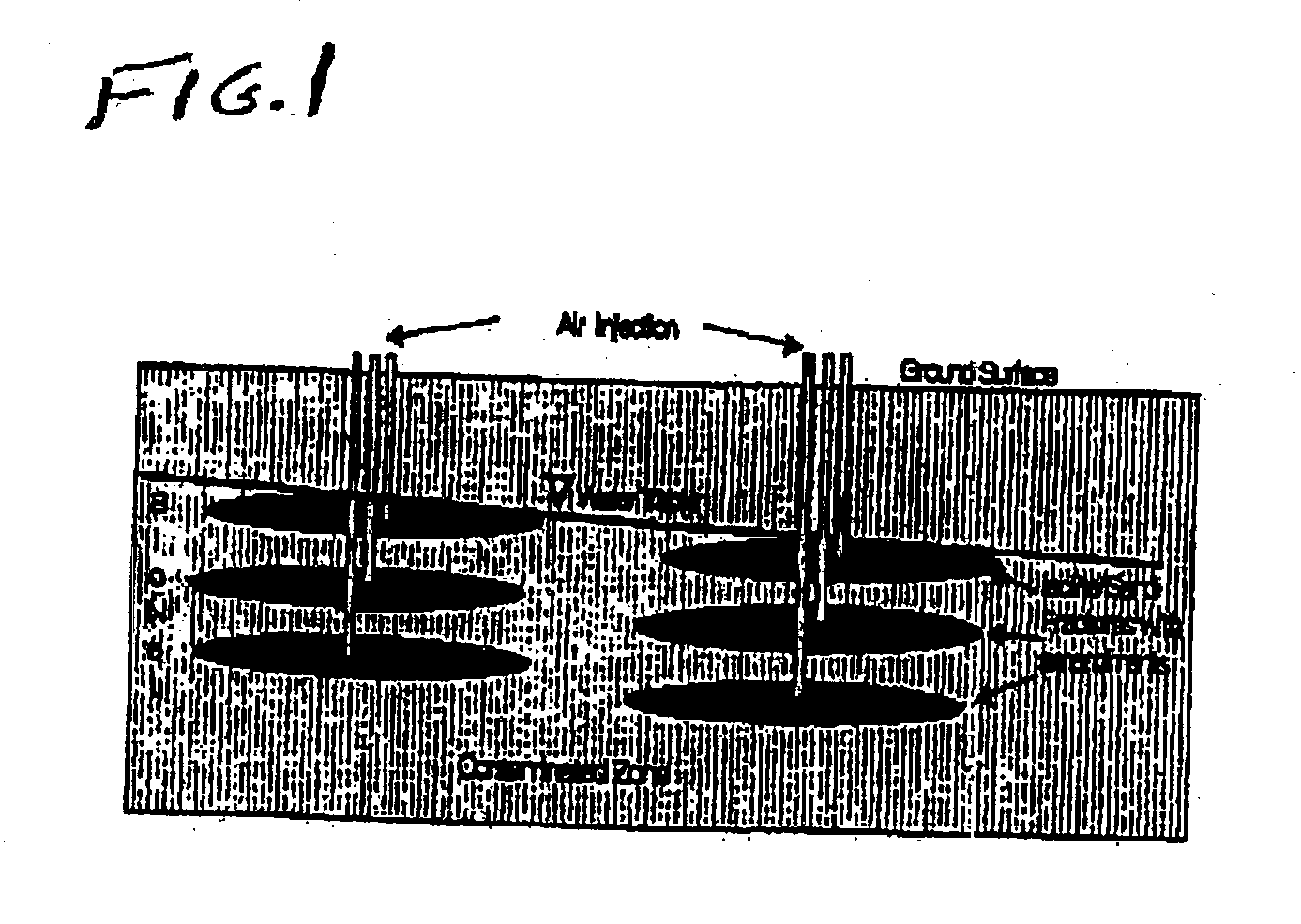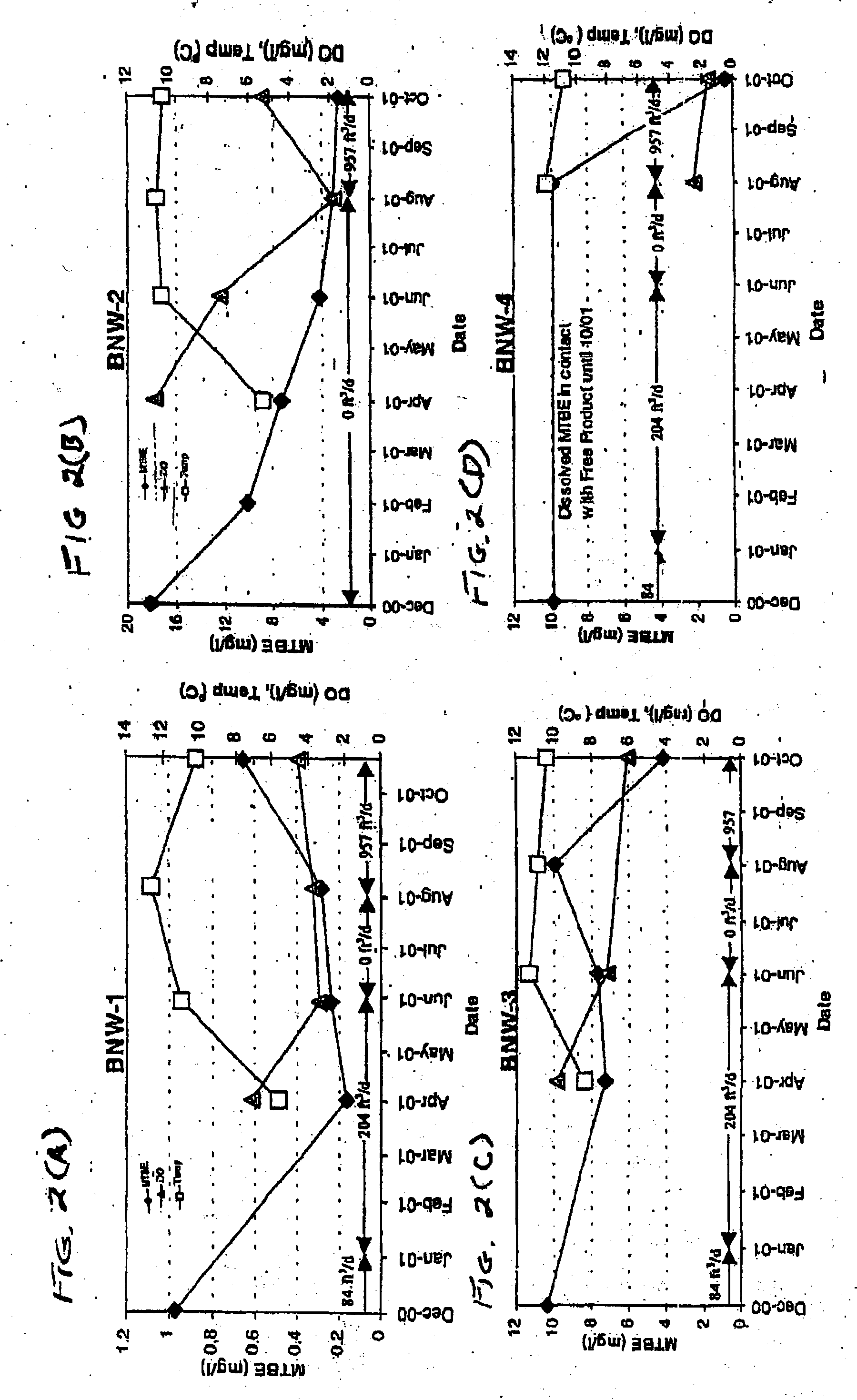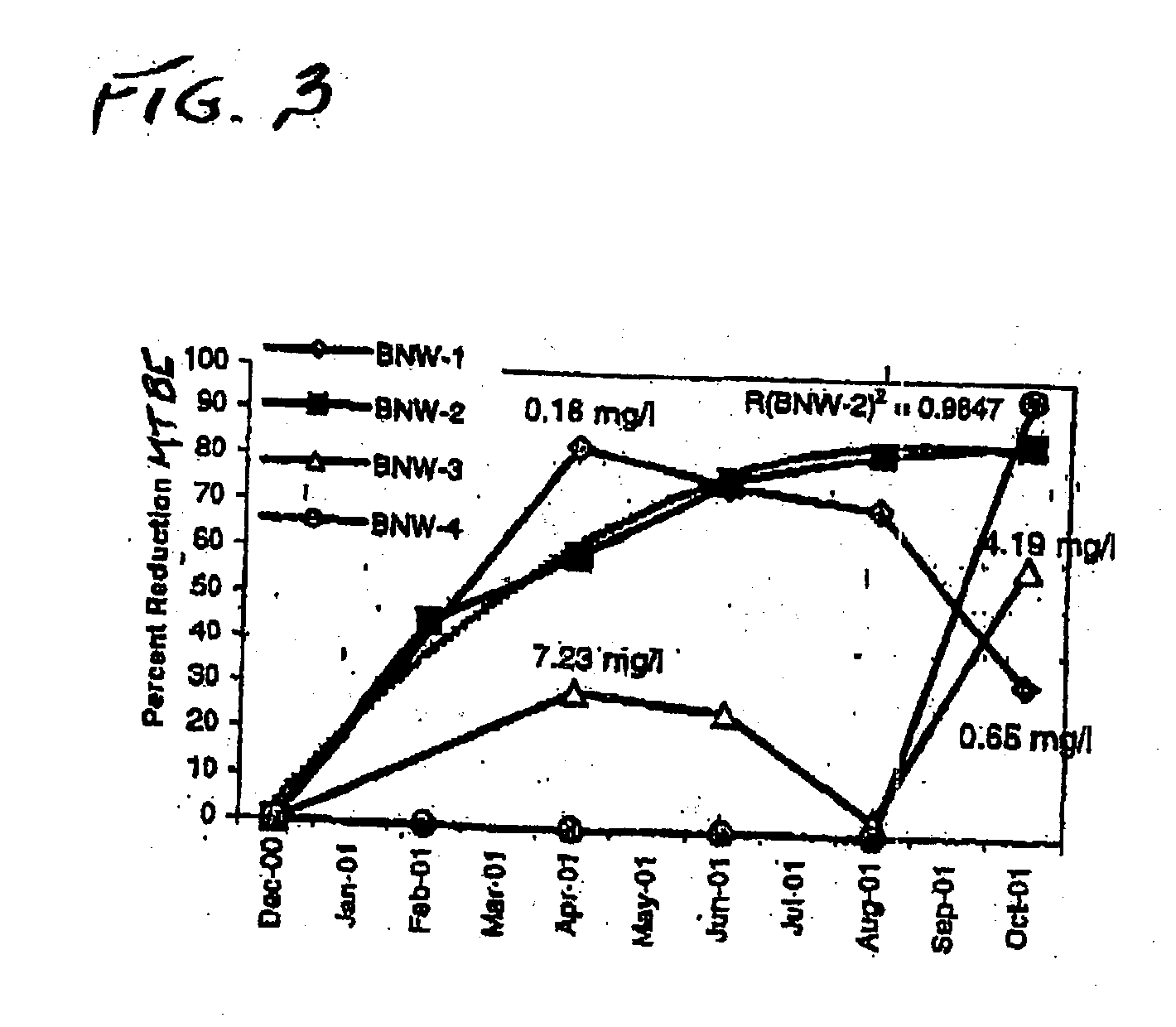Process for the biodegradation of hydrocarbons and ethers in subsurface soil by introduction of a solid oxygen source by hydraulic fracturing
a hydrocarbon and ether technology, applied in the direction of biological water/sewage treatment, chemistry apparatus and processes, wellbore/well accessories, etc., can solve the problems of large water volumes needing to be added to the soil in constant addition, oxygen has been the most important limiting factor, and both methods have significant limitations
- Summary
- Abstract
- Description
- Claims
- Application Information
AI Technical Summary
Benefits of technology
Problems solved by technology
Method used
Image
Examples
Embodiment Construction
[0039] Preparation of SOS by Microencapsulation
[0040] Sodium percarbonate was obtained from Fluka Chemicals (Ronkonkoma, N.Y.). Microencapsulation was performed by the R. T. Dodge Co. (Dayton, Ohio). Poly(vinylidene chloride) (PVDC, as SERFENE 121) was used as the wall material and was obtained from Morton International (Danvers, Mass.) as a preparation of 50% solids in water. It was further diluted to 30% solids in water. Sodium percarbonate was loaded into the 28-cm bed of a Wurster coater (Coating Place, Verona, Wis.) and the air inflow rate adjusted to the point that the compound was fluidized. The PVDC was sprayed in at a rate of 50 to 60 g / min. The final encapsulated product was 50% PVDC (as wall) and 50% (w / w) sodium percarbonate. Thus, 6.5% of the final product was hydrogen peroxide. The coated product was left in the Wurster until dry and then sieved through a 2.36-mm sieve to remove any coarse material. The grain size analysis of the final product was determined using ASTM...
PUM
| Property | Measurement | Unit |
|---|---|---|
| diameter | aaaaa | aaaaa |
| diameter | aaaaa | aaaaa |
| weight ratio | aaaaa | aaaaa |
Abstract
Description
Claims
Application Information
 Login to View More
Login to View More - R&D
- Intellectual Property
- Life Sciences
- Materials
- Tech Scout
- Unparalleled Data Quality
- Higher Quality Content
- 60% Fewer Hallucinations
Browse by: Latest US Patents, China's latest patents, Technical Efficacy Thesaurus, Application Domain, Technology Topic, Popular Technical Reports.
© 2025 PatSnap. All rights reserved.Legal|Privacy policy|Modern Slavery Act Transparency Statement|Sitemap|About US| Contact US: help@patsnap.com



